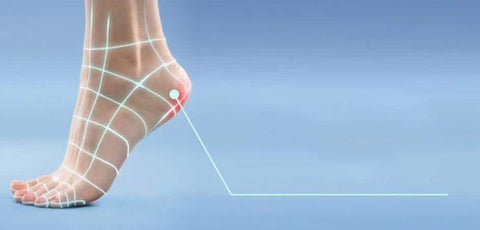What are Cracked Heels? Causes, Signs & Management
Heel cracks are splits or cracks in the outermost layer of the skin over the heel.1 Cracks often begin quite superficially, but over time can extend into the deeper layers of skin.1
What Causes Cracked Feet?
Heel cracks are typically caused by dryness in the outer layers of the skin.1,2 Dry, thickened skin is prone to cracking, and once a crack has started to form, pressure on the heel from standing and walking can worsen cracked heels.1
What are the Signs and Consequences of Cracked Heels?
For most people, the main problem with dry, cracked heels is their unsightly appearance and rough texture.1
In its more advanced stage, the heel may become so dry that it turns white, yellowish, or red in colour and begins to flake. Cracks can deepen to the extent that the mere act of walking becomes incredibly difficult. If left untreated, cracked heels may start to bleed and become infected.
How to Fix Cracked Heels
Relieve unsightly cracked heels at home by trying these remedies:
-
-
Remove any dry, thickened skin from your feet1 – try using the Scholl Hard Skin Foot File, which is designed to remove not only rough and dry but also hard skin to help leave feet feeling soft and smoother.5
-
Apply an emollient, like Scholl Eulactol Heel Balm Gold, twice daily after cleaning and drying your feet.4 Scholl Eulactol Heel Balm Gold contains urea and lanolin which may help restore rough, dry, cracked heels.4 For a feeling of nourishment, you can also try the Scholl Expert Care Dry Skin PediMask™.7
-
Wear socks after moisturising the heel – this can help keep the moisture in and make the emollient more effective.1
-
Choose appropriate footwear that helps support and also reduce pressure on the heel while standing and walking.1
How to Prevent Cracked Heels
Help prevent dry, cracked heels with a good foot-health maintenance routine:
-
-
Check your feet regularly for dry and cracked areas of skin.
-
Avoid harsh soaps and long hot baths or showers, especially if you have dry skin – these can promote moisture loss.6
-
Moisturise your feet immediately after washing using an ointment, cream or heel balm.6
-
Ensure your shoes fit properly and avoid footwear with open heels or thin soles; wearing padded socks or in-shoe inserts may also help protect the skin on your feet.6
-
Speak to your doctor or podiatrist for professional advice on caring for your feet.8
